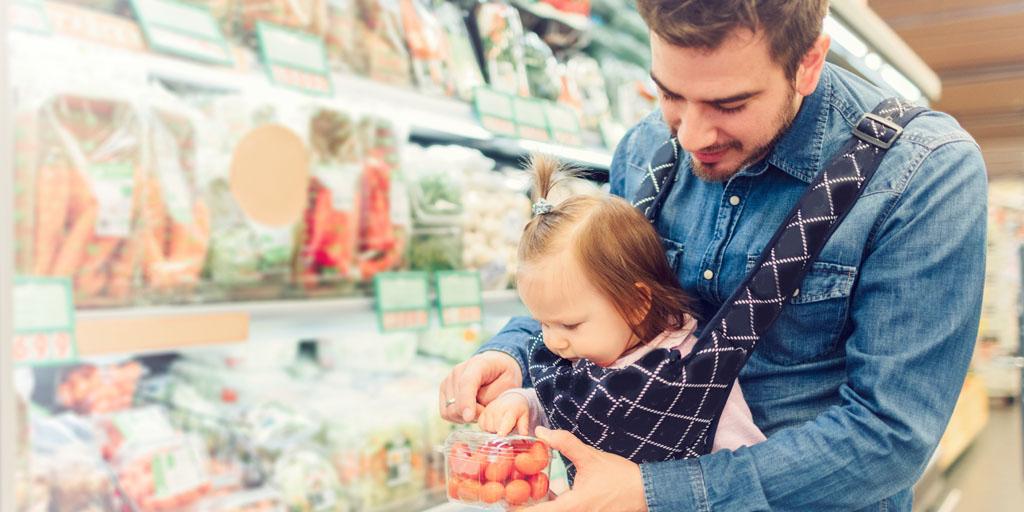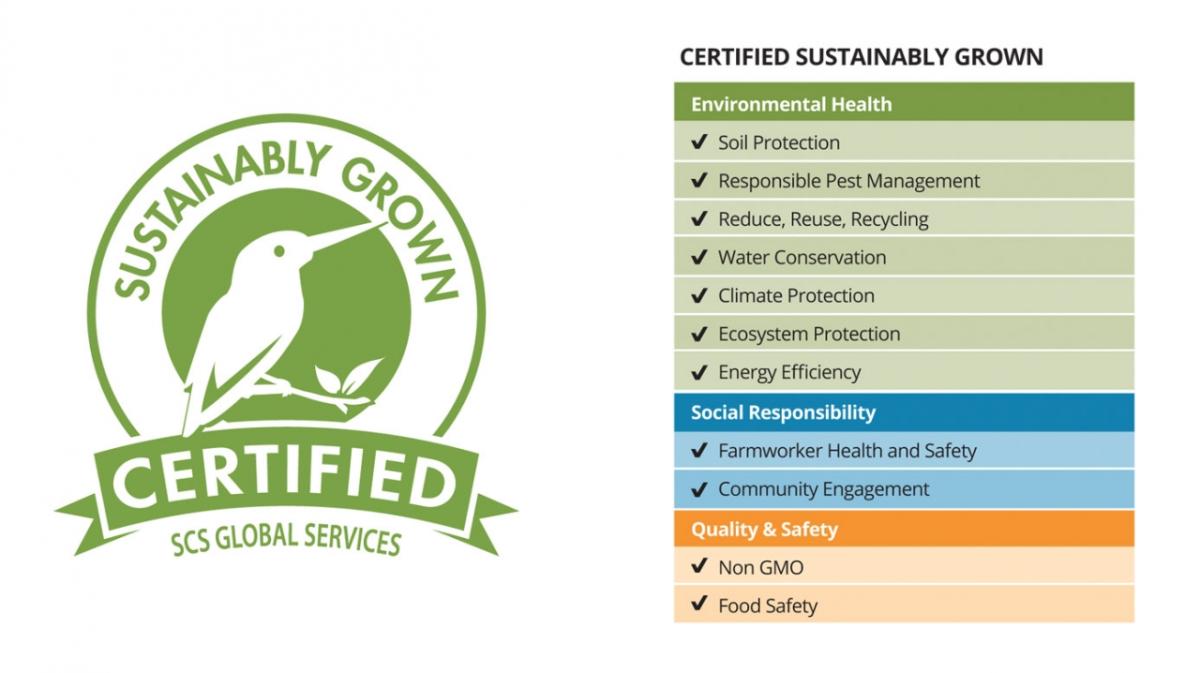Market Forces Driving Combined Food Safety and Sustainability Initiatives
Consumers already making the connection, new SCS survey finds
Market Forces Driving Combined Food Safety and Sustainability Initiatives
The idea that safety and sustainability in fresh produce supply chains go hand-in-hand is logical. From a bird’s eye viewpoint, sound food safety practices are integral to sustainable and resilient agricultural production systems, which in turn are viewed as essential to ending hunger worldwide, as discussed under the United Nation’s Sustainable Development Goal #2. Even so, approaching food safety and sustainability in tandem is just now becoming mainstream.
However, shoppers today apparently already see food safety and sustainability as congruent. According to a new consumer survey commissioned by SCS Global Services (SCS) and conducted by the leading fresh produce analytics firm, Category Partners, more than two-thirds (69 percent) of the 1,800 respondents indicated that food safety is the most important aspect of sustainability, followed by water conservation (56 percent), farmworker health and safety (54 percent), and ecosystem protection (53 percent).
The results of this study are striking, confirming shopper interest in sustainably produced foods and the companies that provide these products, and demonstrating that, even in this era of information overload, they have a reasonable understanding of sustainability issues. Additionally, they think of food safety as an integral aspect of sustainability. By prioritizing this information, retailers and the industry at large are in a position to take advantage of initiatives that promote both food safety and sustainability.
Historically, production managers have tended to make isolated decisions about the best path forward to meet the food safety demands of their wholesale and retail customers. And consumers – who already expected safe food offerings from their grocery store –had an eye on the separate, niche displays of food offerings with organic and sustainability claims. Even at the national level, the first iterations of FDA’s Food Safety Modernization Act (FSMA) –the most sweeping reform of United States (US) food safety laws in more than 70 years –had little acknowledgement of the potential impacts of new regulations on small-scale farmers, and on conservation and wildlife protection (that is, until advocacy organizations stepped in).
In my article, “Food Safety and Sustainability: Flip Sides of the Same Coin,” and follow-up webinar, “Harmonizing Food Safety + Sustainability in Fresh Produce,” I discussed the ways in which food safety and sustainability objectives are complementary and overlapping, and about some of the hurdles in harmonizing the two, both economic and institutional. In this article, I will provide a quick recap of the emergence of food safety initiatives in the US and Europe, then explore the converging paths of food safety and sustainability in the marketplace.
Emergence of a food safety culture
During the last century, the food supply chain started out primarily reactive to food safety scares, then gradually become more proactive. By the 1990s, food producers in the US were relying largely on a system of mandatory FDA and USDA risk-based food safety programs for specific food sectors (e.g., HACCP for Seafood, Juice, Meat and Poultry), periodic regulatory inspections, and private firms auditing to various voluntary standards. In the European Union (EU), following the bovine spongiform encephalopathy (aka “mad cow disease”) crisis of the mid-1990s, the food industry became one of the most heavily regulated sectors by the EU’s European Food Safety Authority (EFSA).
In the year 2000, after enduring a record number of food safety incidents, the global food industry launched the Global Food Safety Initiative (GFSI) with the goal of reinforcing non-competitive collaboration on solutions to collective concerns. Managed by The Consumer Goods Forum (CGF), GFSI consists of a global network of food safety leaders that represent retail, manufacturing, production, distribution, food service, government, and academia. Members work on issues such as reducing economic risks and audit duplication, while providing added confidence in the delivery of safe food. Additionally, GFSI has become a benchmarking platform to affirm the rigor of food safety auditing standards such as SQF, GLOBALG.A.P, BRC, and PrimusGSF.
In the US, food safety is now under closer scrutiny than ever due to evolving FDA Food Safety Modernization Act (FSMA) requirements, leading to a climate of action (and anxiety) within the supply chain. Each successive crisis, such as the current Romaine lettuce recall for E. coli, provides a stark reminder of the huge risks of such outbreaks – not just to consumer health, but to brands, sales, and the economic health of entire industries. With respect to Europe, the European Commission’s Directorate-General for Health and Consumers commissioned the sweeping study, “Delivering on EU Food Safety and Nutrition in 2050 – Future challenges and policy preparedness,” (published in 2016) to support its policymaking process. Here, the EU recognizes that future challenges and impending risks to the food supply chain are not just those associated with health, nutrition, and emerging pathogens, but also with climate change, resource and energy scarcity, and demographic imbalances.
Striking the right balance
Consistent with the EU study findings, a system that focuses exclusively on food quality and safety – whether at the retailer, distributor, or producer level – can result in potential tradeoffs with other values. As I’ve touched on before, being shortsighted about long-term sustainability can lead to management decisions that work counter to the bottom line and productivity, not to mention societal costs, ecosystem protection and biodiversity. For example, many non-organic crop producers steer clear of animal-derived fertilizer for fear of greater risk of pathogenic contamination, even though properly composted manure has been demonstrated to be effective, safe, and essential for maintaining microbial diversity and biological activity in soils. At the wholesale and distribution levels, food safety measures, such as restrictions on reusable containers, work counter to waste reduction, an external cost passed onto the larger community. In short, failure to adhere to sustainability principles can cost both the producer and the larger community dearly, financially and otherwise.
Fortunately, changes are happening. The food industry is increasingly recognizing that striking the right balance between food safety and sustainability is not a zero-sum game, but rather, mutually reinforcing. For instance, they both deal with risk management, science-based approaches, compliance with minimum standards, supply chain integration, and traceability. And they both have this human dimension – where training and empowerment are essential for realizing material improvements that are aligned with the organization’s objectives. The way I see it, food safety is one aspect of a holistic set of good practices that serve to mitigate vulnerabilities to things like adverse weather conditions and reduce stress on natural resources and worker welfare. I don’t know a single farmer who wouldn’t agree with that statement.
From a B2B sales perspective, conformance with stringent food safety practices has become a necessity of doing business, while sustainability is seen as the value-add proposition. This shift is especially visible at the retail level, where a growing number of companies have instituted and are enforcing supply chain specifications. Walmart, Whole Foods, and Costco in the U.S., and Ahold and Tesco in Europe, are examples of grocery retailers that have taken measures to integrate both food safety and sustainability policies into their vendor programs, which has had a trickle-down effect on supply chains.
The standards development and third-party certification communities are also quite active in providing tools and solutions for companies to communicate their proactive measures. The Equitable Food Initiative (EFI) certification, for example, includes extensive food safety requirements with a focus on worker training and engagement. GLOBALG.A.P., a GFSI-benchmarked food safety scheme, also offers sustainable production and processing modules. SAI Platform’s Food Safety Assessment (FSA) and the Consumer Goods Forum’s Global Social Compliance Program (GSCP) are serving as benchmarking tools (like GFSI is for food safety) for general sustainability and social responsibility, respectively. As a third-party certifier, SCS provides bundled sustainability and food safety services encompassing all of these options (and more) to help clients minimize costs and approach these issues holistically. For example, our Sustainably Grown certification program and GLOBALG.A.P. audits, facilitated through cross-trained auditors and special audit tools, enable production companies to check both boxes after a single audit.
Taking the Message to Market
In this day and age, a mindset that puts the consumer first is critical to competitive success. In the fresh produce industry, producers have long depended on product labels to communicate their market-differentiating performance achievements, and in the past decade or so, online and social media messaging. However, food safety labeling is complicated by the fact that even the most effective food safety management programs can be compromised by one accidental contamination or breach, so direct, on-product B2C messaging is generally not permitted or advised. Sustainability is another story altogether, with the number of labeled products surging.
Grocery retailers occupy an especially pivotal position as the primary point of connection to the end consumer. Through their procurement decisions and policies, advertising and in-store merchandising decisions, retailers are helping to shape consumer choice as they aim to meet consumer preferences.
Third-party certification remains a valuable part of the messaging. For instance, the SCS shopper survey, which focused on the SCS Sustainably Grown certification program, found that shoppers liked to see that such claims were confirmed by a third-party, indicating that it lent credibility to the claims. Shoppers also appreciated when labels pointed them to online resources where they could dig deeper to learn more about the details behind the sustainability claim, making comments such as “I appreciate being able to verify claims made by the company.” And when presented with an online list of sustainability attributes, 88% of respondents said they would be likely to click on an attribute to learn more.
In summary, food safety fundamentals, transparency around sustainability issues, and third-party verification are interconnected in influencing shopper decision-making in the produce aisle. This is momentum that we must all embrace. After all, the stakes are high: the health of farms, farming communities, farmworkers, environment, and eaters depend on it.
Lesley Sykes is SCS Global Services’ Manager of Sustainability in the company’s Food and Agriculture division, and a 2017-2018 participant in the United Fresh Produce Industry Leadership Program. For more information about SCS' combined food safety and sustainability service offerings, contact Lesley Sykes at lsykes@scsglobalservices.com
If you enjoyed this article, be sure to SUBSCRIBE to SCS Topics to be alerted whenever we publish new articles.



